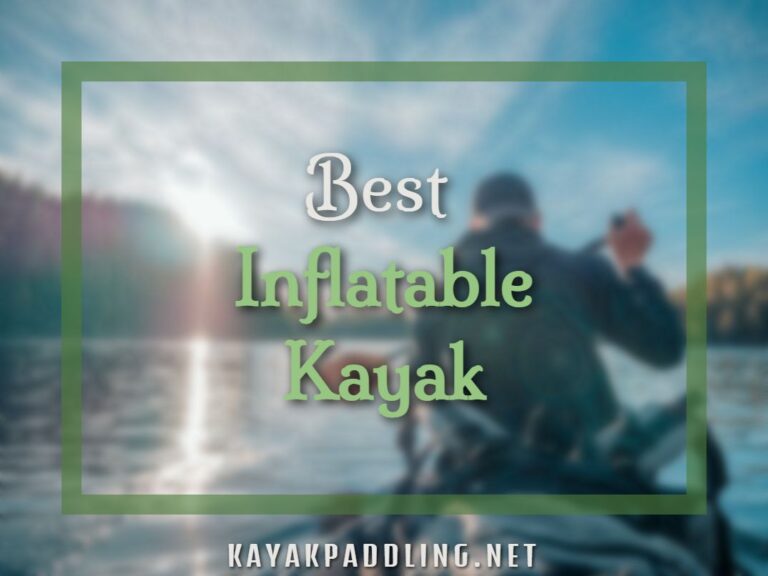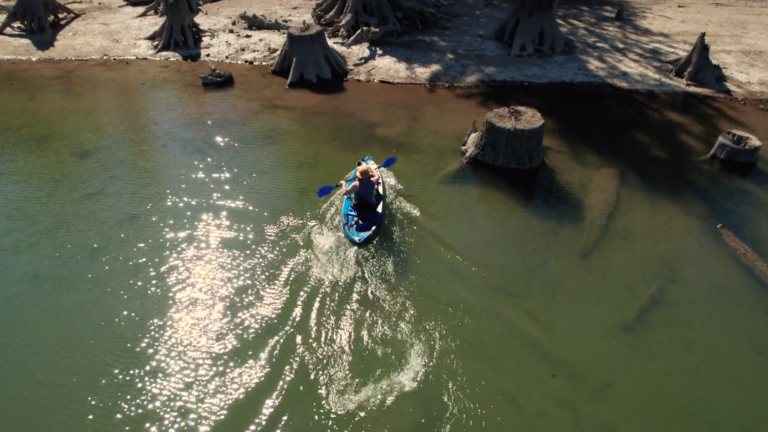There are many types of paddleboards, including inflatable and rigid. Which type is most appropriate for you depends on your experience level, the area in which you intend to paddleboard, and the conditions under which you will be paddling. Choosing the right paddleboard can be quite a daunting task and you need to consider multiple things when getting one. You need to think about how the paddle will fit your size and what types of water are you going in. Some of the things you should note are all from the shape of the stand-up paddleboard, the volume and capacity to the general size of the board, and how thick it will be. With all these things in mind, you will then make the decision and get the right stand-up paddleboard that will fit your needs and your situation. So with all that let’s delve into some of the basics of these boards and how to pick one for yourself.

Table of Contents
ToggleInflatable
An inflatable stand-up paddleboard is just that—a board that can be deflated into a backpack or large duffle bag for transportation. The boards range in length from 7 to 12 feet depending upon your weight. They’re typically made of drop stitch material with multiple chambers similar to an air mattress. The chambers allow the board’s volume to decrease as it goes through multiple deflations without reducing the board’s integrity. An inflatable stand-up paddleboard is ideal for the casual paddler or someone who wants to have a SUP that can be easily stored and transported.
Rigid
A rigid stand-up paddleboard, typically polyethylene, is more expensive than an inflatable but it won’t deflate and lose its rigidity while you’re transporting it. Manufacturers use various types of materials, including fiberglass and carbon fiber in their rigid boards because they are durable and lightweight. A rigid board also allows a paddler to carry a full range of movement without worrying about the pressure changes caused by multiple deflations. If you’ve never been paddle boarding before, a rigid board is probably your best choice since they’re sturdier and more responsive to a paddler’s movements.
In addition to inflatable vs. rigid, there is a variety of materials from which you can choose, including polyethylene, fiberglass, epoxy resin system (composed of two sheets—the bottom sheet is fiberglass; the top sheet is either biaxial or uni-directional), and carbon construction (one layer of carbon material). The various materials are designed for specific purposes depending on the level of experience that you’ve reached. For example, if you’re an experienced paddler who wants a board with exceptional responsiveness and speed, you’ll likely want to purchase one made with epoxy resin because it’s lightweight and durable. If this isn’t a concern, a polyethylene board is the least expensive and will serve you well.
Inflatable stand-up paddleboards are best for casual paddlers who generally remain close to shore. They’re also ideal if you want to be able to easily transport your SUP from one location to another. The rigid stand-up paddleboard is more challenging because it’s heavier but it allows a paddler the full range of movement needed for controlled turns and speed. The inflatable vs. rigid debate can come down to personal preference but generally speaking, experienced paddlers prefer a rigid board while beginners take advantage of a wider range of features offered by an inflatable SUP.
What type of board has better performance?

Inflatable SUPs are much easier to transport given their flexibility in size and weight. Once the standup paddleboard is inflated, it will be much bigger than an inflatable SUP. Ranging from 10’6″ – 12′. Inflatables tend to have wider tails making them more stable when standing which can make it ideal for a beginner. The inflatable paddleboards typically offer less space inside compartments due to there being less material in an inflatable board itself. Which can cause deflated boards to dent or bend under pressure when paddled in the water over longer periods of time. As well as this, deflated boards don’t have the rigidity either. Making it less efficient for turning or going fast.
Which type of SUP is more versatile?
Rigid stand-up paddleboards are typically longer than inflatable stand-up paddleboards which allow easier paddling along with straighter tracking. Rigid paddleboards typically offer better performance than inflatables do as they are much stiffer and can handle choppier water conditions well without too much worry. However, the only downside to this is that rigid boards are heavier than inflatable ones, making them harder to move around on land or transport via car. And usually, the reduction in rigidity means you will go slightly slower than an inflatable board would due to there not being as much material inside the board itself.
Inflatable stand-up paddleboards are best for casual paddlers who generally remain close to shore. They’re also ideal if you want to be able to easily transport your SUP from one location to another. The rigid stand-up paddleboard is more challenging because it’s heavier but it allows a paddler the full range of movement needed for controlled turns and speed. The inflatable vs. rigid debate can come down to personal preference but generally speaking, experienced paddlers prefer a rigid board while beginners take advantage of a wider range of features offered by an inflatable SUP.
Which type of SUP has better maneuverability?
An inflatable paddle board is easy to maneuver because it’s light in weight. This makes it easier for the rider with no prior SUP experience to control the board when paddling in areas with heavy currents or choppy water. Furthermore, inflatable boards are highly portable which allows you to take your board almost anywhere without having to worry too much about transporting your paddleboard on top of a vehicle, quad bike, or even in some cases carrying them into the water by hand. And with an inflatable stand-up paddleboard, one can easily deflate their board after use then store it away in minimal space allowing you more room when at the home base since not many people have access to large garages where they keep their vehicles throughout the year.

What type of board has better stability?
An inflatable paddle board is much wider and more stable due to how it’s thicker and more rigid. While an inflatable SUP may be harder to control when paddling in choppy water, the list of pros ultimately outweigh any cons when it comes to overall stability with this type of paddleboard.
An inflatable stand-up paddleboard is slightly less stable than a rigid one is but still offers enough buoyancy for you if you happen to fall off your board during use. If you’d like, you can even add some additional floatation with a few floating accessories that we’ve reviewed previously on our site.
What type of board has better durability?
A hard shell standup paddleboard with drop stitch technology will typically last longer than an inflatable SUP. Inflatables are often more prone to damage as they’re made from durable PVC materials that can be punctured easily depending on where you store your paddleboard when not in use. As well as this, hard-shell boards have thicker exterior walls which protect the board from wear and tear better than a thinner inflatable would. However, adding a drop sheet or patch kit can help keep your board protected against any accidental dings so it’s always best to consider all options before making a final purchase.

What type of board has a lower cost?
An inflatable stand up paddleboard will typically cost less than a rigid one would because it requires less material (and thus costs less) to construct them compared to creating rigid boards. And just like any other product in the sporting goods market, you’ll often find that the cheapest option is the best one to go for if you’re looking for something affordable.
An inflatable paddleboard will typically cost less than a rigid SUP would but there are also several additional accessories, such as carrying bags and hand pumps, which can help increase your overall investment costs. Also keep in mind that since inflatables are made from durable PVC materials, they do not require much maintenance work to keep them running efficiently over time. However, hard-shell boards are far more expensive due to how they’re built with carbon fiber or even wood – these high-quality materials don’t come cheap!
Inflatable stand-up paddleboards are good for beginners or casual paddlers who want a lightweight board that can easily be transported and stored. Rigid boards are more expensive than inflatable ones, and they require more experience and training, but they’re optimal if you need a highly responsive board. Experience levels, the area in which the SUP will be used, and the price range should be considered when choosing between inflatable vs. rigid SUPs.
Adelaide Gentry, a seasoned kayaking enthusiast and expert, is the driving force behind KayakPaddling.net. With over a decade of experience navigating the world’s most challenging waterways, Adelaide combines her passion for adventure with a deep knowledge of kayaking to provide insightful and practical guidance for paddlers of all levels.
Related Posts:
- 16 Best Kayak For Beginners 2025 - Kayaking Adventure Gear
- Heavy Duty Fishing: 11 Best Rods And Reels For Big Fish 2025
- 10 Best Fish Finders Under $200 2025 - Top Affordable Picks
- 10 Best Inflatable Kayak 2025 - Rivers, Lakes & Open Seas
- 12 Best Motorized Kayak 2025 - Start Your Aquatic Adventure!
- 10 Best Kayaks For Camping 2025 - Lightweight and…












